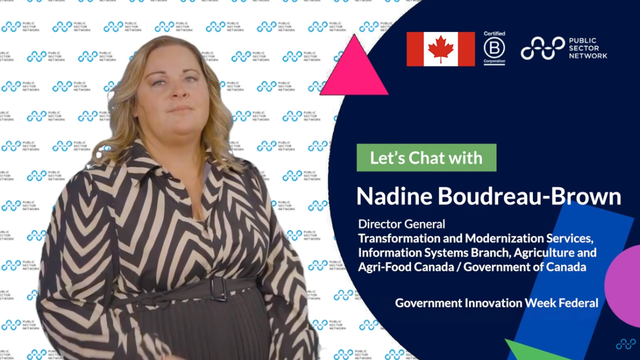
 When did Code for Canada become established? And why?
When did Code for Canada become established? And why?
Code for Canada was established as a national nonprofit in 2017 with a vision that everyone in Canada, regardless of who they are or where they live, has access to inclusive, accessible and effective digital solutions.
We’re inspired by other public-benefit organizations that are working to enhance their communities, and we’re here to help them leverage digital best practices to reach their goals.
How do you stay updated on the latest trends and best practices in civic technology and user-centered design?
We are lucky to have a talented staff of technologists and professionals who are engaged with their work and its impact on civic technology and digital government spaces.
Code for Canada’s culture encourages relentless curiosity, and you'll often find folks openly sharing their latest work-related reading, training and event recommendations.
We make a point of hosting regular lunch-and-learns on relevant topics. We also host a quarterly national civic tech community meeting, where civic technologists from across Canada meet (virtually!) and share what they’re seeing and doing in their part of the country. And, of course, we attend events like the Public Sector Network’s Public Sector Innovation Shows, where we can hear from leaders in civic digital transformation.
What are three key trends and best practices that C4C is seeing in the Canadian government?
Because we’re lucky enough to work with public sector partners across the country, we get a glimpse into how the digital landscape is changing in different places. We’ve seen an increased willingness to embrace agile and digital ways of working, although many of our partners still face systemic barriers to their adoption.
We’re also thrilled to see more and more of our government partners championing the importance of user research and testing when it comes to the design and development of digital public services. We feel lucky to be helping teams at the municipal, provincial, and federal level engage the diverse folks across Canada that they’re building solutions for.
And we’d be remiss if we didn’t mention the fantastic work of our friends at places like the CDS, ODS, and NSDS (now the Department of Cyber Security and Digital Solutions), who are moving the needle on digital transformation within government in a big way.
Are there any barriers slowing innovation down from occurring?
This is something we’re always talking about because as much as we want to focus on the good news stories in government digital transformation, we also need to expose the barriers to it if we want to see change at scale.
Most folks know things need to change, but until there’s a broader understanding of what these barriers are and how change is possible, the status quo is more likely to continue.
We often advocate for overhauling the existing procurement model (moving away from high-cost, long-term contracts towards smaller, agile ones). We also encourage investing in digital talent within the public service (we’ve written a whole case study about it.)
We work to uncover and address barriers that are preventing Canadians from the simple and efficient digital services they need and deserve.
Code for Canada focuses on open-source projects. Could you discuss the advantages and challenges of working on open-source civic technology projects?
We absolutely believe in the value of open-source projects and advocate for them whenever possible. When fully open-source isn’t an option, we still advocate for working as “in the open” as possible, which can take many forms — sharing work processes and learnings within a department, carefully documenting learnings to be shared within government agencies, or creating articles and presentations to share with the broader public sector community.
We believe that the more visible the work is, the more we can accelerate learning, progress, and demonstrate what’s possible. It enables shared learnings and communities of practice to form, which is incredibly valuable for digital transformation in the public sector.
How do you ensure that the digital solutions you develop are accessible and inclusive for all citizens, including those with disabilities or limited technology access?
It’s common knowledge in Silicon Valley and beyond that technology built with users works better. More and more government teams nowadays understand this and are asking for feedback from the potential users of their programs and services.
But public service designers face a number of complex barriers to connecting with their users, which means digital products are still being designed and tested in ways that exclude important voices.
That’s why we created GRIT, an inclusive user research and usability testing service that connects research and design teams with diverse and underrepresented communities across Canada.
GRIT's community represents a diversity of backgrounds, lived experiences, abilities and technical skill levels. We create the conditions needed for them to confidently and openly engage with the government teams looking to serve them. We consider things like inclusive and plain language, opportunities outside of traditional working hours, and fair compensation for our participants because we believe engaging with real people (not just professional testers or colleagues) is the most effective way to create better public services.
What is Code for Canada's goals for the future and beyond?
Our main goal is to work with as many new mission-aligned organizations as possible — whether that means a non-profit or a new government partner in search of digital transformation support. We’re in the process of expanding our inclusive UX service across Canada. And we have our most ambitious project to date currently in the works — you can subscribe to our monthly newsletter to be the first to hear about it.


































